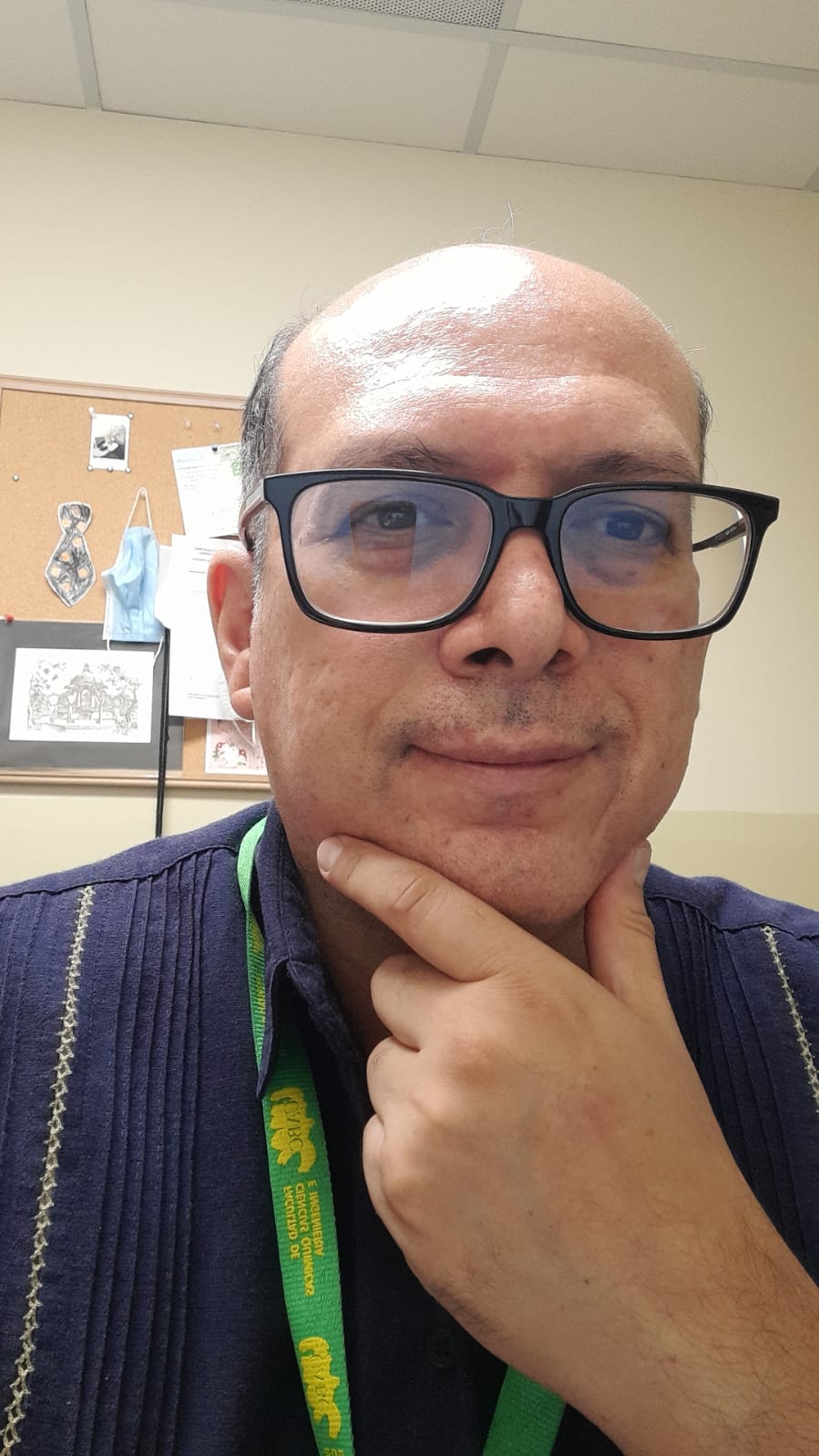José Jaime Esqueda Elizondo
@uabc.mx
Facultad de Ciencias Químicas e Ingeniería
Universidad Autónoma de Baja California
EDUCATION
Bachelor Degree: 1999, Electronics Engineer, Instituto Tecnológico de Ciudad Madero, Tamaulipas, México.
Master of Science Degree: 2001, Instituto Politécnico Nacional, Tijuana, Baja California, México.
PhD: Doctor of Science, 2022 Universidad Autónoma de Baja California, Ensenada, Baja California, México.
RESEARCH, TEACHING, or OTHER INTERESTS
Electrical and Electronic Engineering, Biomedical Engineering, Signal Processing
Scopus Publications
Scopus Publications
D.A. Trujillo-Toledo, O.R. López-Bonilla, E.E. García-Guerrero, J.J. Esqueda-Elizondo, J.R. Cárdenas-Valdez, U.J. Tamayo-Pérez, O.A. Aguirre-Castro, and E. Inzunza-González
Elsevier BV
Marco Antonio Gómez-Guzmán, Laura Jiménez-Beristaín, Enrique Efren García-Guerrero, Oscar Roberto López-Bonilla, Ulises Jesús Tamayo-Perez, José Jaime Esqueda-Elizondo, Kenia Palomino-Vizcaino, and Everardo Inzunza-González
MDPI AG
The study of neuroimaging is a very important tool in the diagnosis of central nervous system tumors. This paper presents the evaluation of seven deep convolutional neural network (CNN) models for the task of brain tumor classification. A generic CNN model is implemented and six pre-trained CNN models are studied. For this proposal, the dataset utilized in this paper is Msoud, which includes Fighshare, SARTAJ, and Br35H datasets, containing 7023 MRI images. The magnetic resonance imaging (MRI) in the dataset belongs to four classes, three brain tumors, including Glioma, Meningioma, and Pituitary, and one class of healthy brains. The models are trained with input MRI images with several preprocessing strategies applied in this paper. The CNN models evaluated are Generic CNN, ResNet50, InceptionV3, InceptionResNetV2, Xception, MobileNetV2, and EfficientNetB0. In the comparison of all CNN models, including a generic CNN and six pre-trained models, the best CNN model for this dataset was InceptionV3, which obtained an average Accuracy of 97.12%. The development of these techniques could help clinicians specializing in the early detection of brain tumors.
Alejandra Serrano-Trujillo, José Jaime Esqueda-Elizondo, and Laura Jiménez-Beristáin
MDPI AG
This work presents an electronic sensing approach composed of a pair of Physical–Chemical and Imaging modules to preserve an aquaponic system. These modules offer constant measurements of the physical–chemical characteristics within the fish tank and the grow bed, and an indication of the health of the growing plants through image processing techniques. This proposal is implemented in a low-cost computer, receiving measurements from five sensors, including a camera, and processing the signals using open-source libraries and software. Periodic measurements of the temperature, water level, light, and pH within the system are collected and shared to a cloud platform that allows their display in a dashboard, accessible through a web page. The health of the vegetables growing in the system is estimated by analyzing visible and infrared spectra, applying feature extraction, and computing vegetation indices. This work provides a low-cost solution for preserving sustainable urban farming systems, suitable for new farming communities.
César Ortega-Corral, José Jaime Esqueda Elizondo, Oscar Ricardo Acosta Del Campo, Luis E Palafox, Leocundo Aguilar, Ricardo Guerra-Frausto, Florencio López Cruz, Roberto A Reyes, Jesús Enrique López-Montoya, and Carlos Chávez
SAGE Publications
We present challenges faced deploying a solar-powered wireless sensor network base station and nodes, at a remote oyster farm. It involved installing the base station system and a data server at the shore of a shallow bay, where there is no electrical power available. To solve the problem, we set up a photovoltaic array with an energy monitoring node, from which performance metrics were recorded and plotted. At the water, we deployed two wireless sensor nodes on a raft, a kilometre away from the base station. One node was configured for sea water pH and water temperature ( Tw) measurements. The other node was configured for salinity and Tw measurements. Furthermore, both nodes measured air temperature and relative humidity, for a more complete characterization. At the salinity node, temperature and relative humidity knowledge was crucial to determine a gain factor for doing a trial of a transmission power control scheme, using a novel temperature and relative humidity algorithm. To enable a fair comparison, the pH nodes transmitter was configured with a fixed power level. The nodes performances were measured locally at the base station, recording metrics such as received signal strength indicator and packet received rates.

